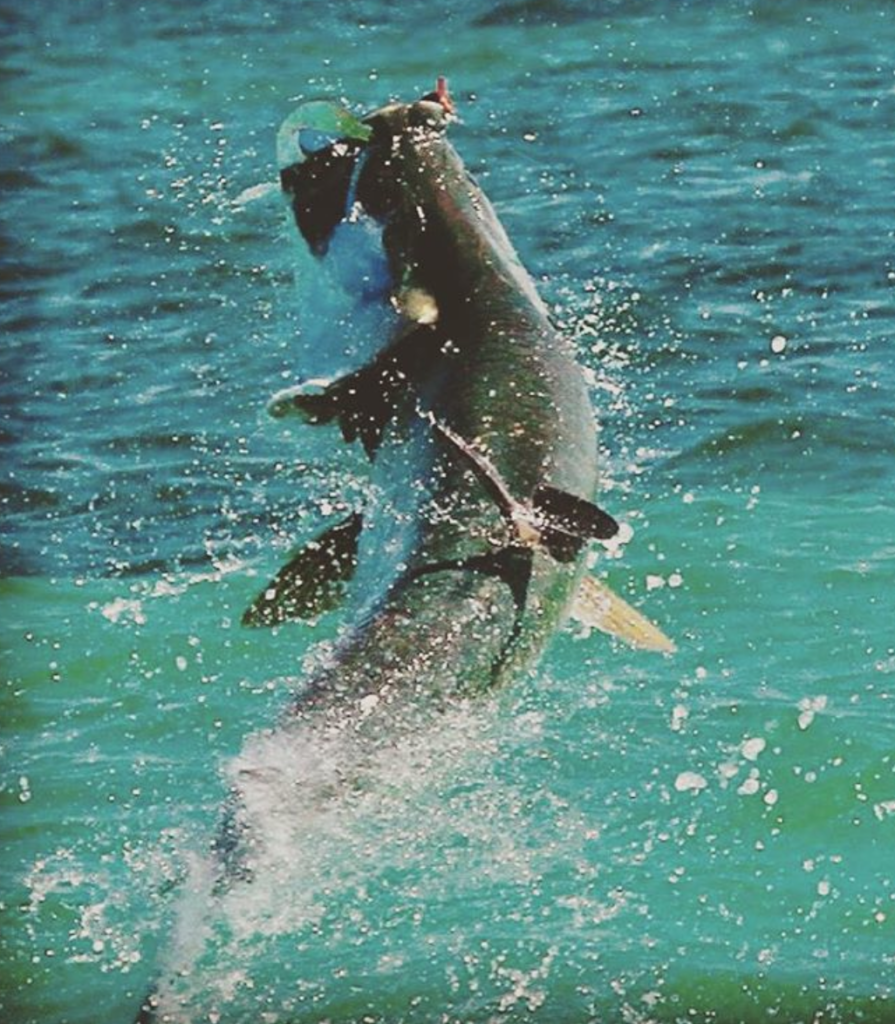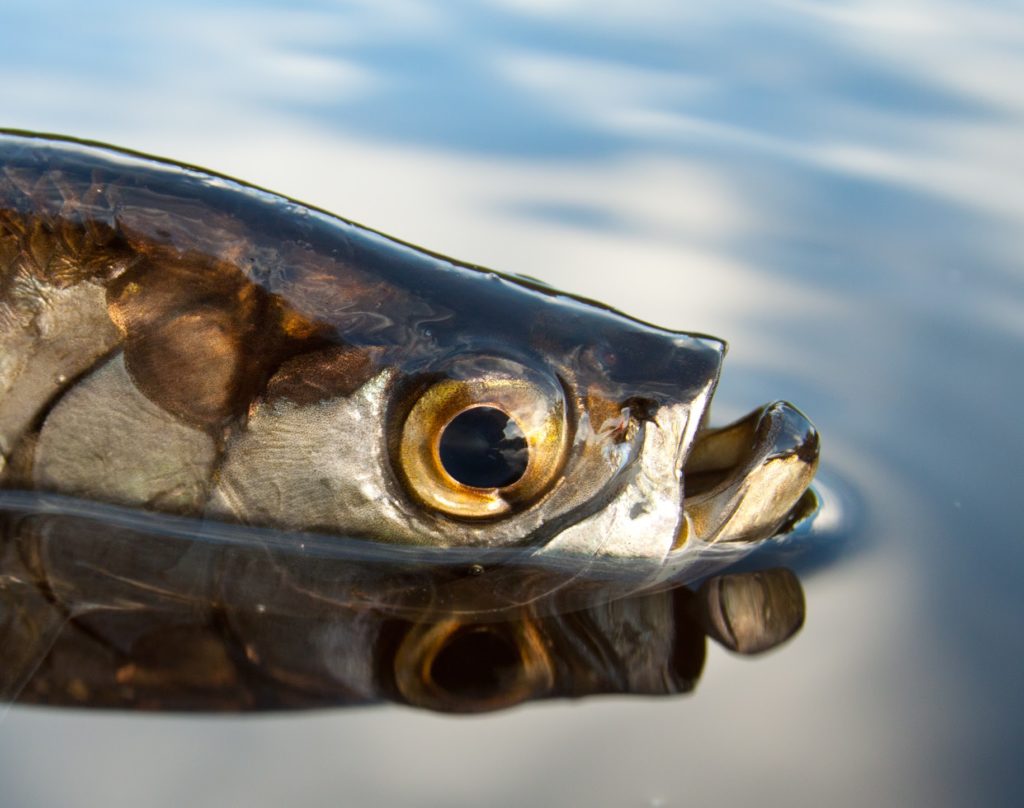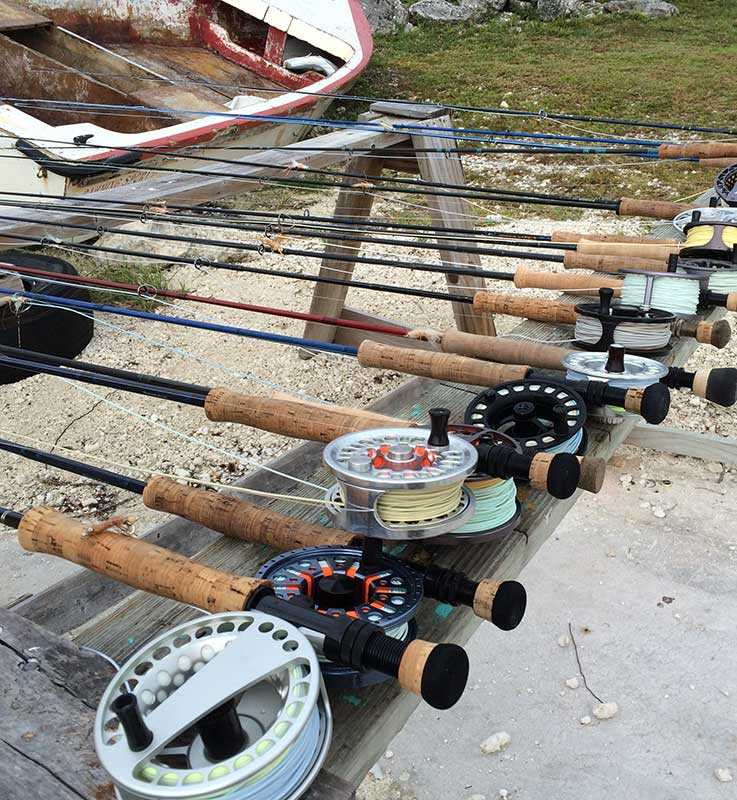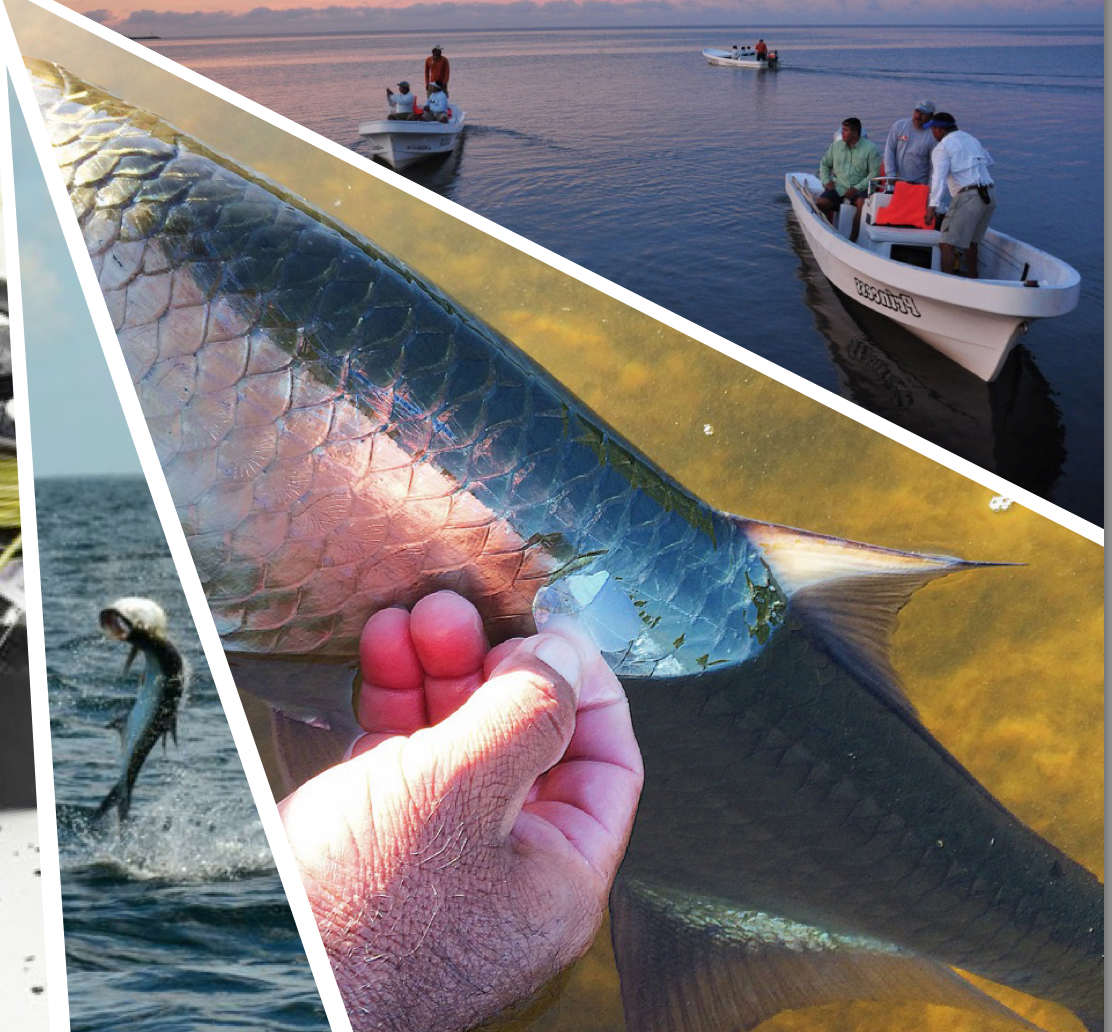WE TOLD CHARLES HE WAS DERANGED WHEN HE ANNOUNCED PLANS TO RETIRE AND RELOCATE TO CAMPECHE, MEXICO, TO LEARN SPANISH AND FISH FOR TARPON
Granted, he is an enigmatic bon-vivant type who spent much of his life bouncing from place to place before settling into a successful career and life in Atlanta. He continued to have the wanderlust and satiated it with consistent fishing and hunting trips around the world. But he was determined to learn Spanish and figured that in his seventies, full immersion was the only option. On many occasions he raved about his trips there and how magical the fishery was, so I had to see for myself. I anticipated Campeche being a quaint fishing village
and it turned out to be anything but. A historic walled city on the Western Coast of the Yucatan first settled by the Spanish in 1517, it is a charming mix of old and new. The city is filled with fabulous restaurants, shops and beautiful old buildings crowned by a magnificent cathedral, and as you get farther outside the historic district, there is a smattering of Starbucks, Walmarts, McDonald’s joints, and many other infringements from the Western world. And it is by all accounts a remarkable fishery. My main fascination with visiting Campeche is that Tarpon Town—the moniker given to it by Raul Castaneda, who runs the main fishing operation there — is home to one of the most prolific juvenile tarpon nurseries on earth. The Bonefish and Tarpon Trust side of me is fascinated by the science behind tarpon; where they come from, how far they travel in a lifetime, where they spawn, how long they live. I brought a number of tarpon scale-sample kits from BTT to contribute to the genetics study we are currently conducting, which will help determine tarpon population connectivity, and in turn will aid management strategies. We know that many tarpon migrate great distances; the question is how interconnected are the tarpon that we catch in Mexico, or in Florida, or in South Carolina?

It is very probable that some of the tiny juvenile tarpon flourishing in the creeks in Campeche are seen and caught many years later during one of the famous tarpon migration Raul picks us up in his truck each morning before sunrise and we make the short trip from our hotel to the marina where guides wait in 23’ pangs to whisk us off. Many of the fishing spots are along mangrove shorelines and in narrow creeks and inlets. Much of the habitat is very similar to what I see in the Florida Keys and the Everglades, but other than hoards of small tarpon and some snook, barracuda, and baitfish, there are very few other species around. For example, there are few sharks, making this an ideal juvenile tarpon habitat — lots of food, mangroves for shelter, and very few predators. I marvel that the guides can pole these large boats with long wooden push poles, since I have trouble enough with a tiny skiff and a graphite pole. They are good at spotting tarpon and we get to fish a variety of different habitat and scenarios, casting to large schools of tarpon cruising along shorelines, smaller groups roaming in shallow creeks and kicking up a trail of silt as they charge after our flies, and tiny silver fish rolling in the blink of an eye in tannic mangrove creeks. We get as many scale samples as we can—holding the fish in the water and carefully pulling one tiny scale before releasing them. My guide the first day is very excited about conducting the science with BTT and at one point after some utter chaos, with both anglers doubled up for over an hour, he systematically pulls a scale from each fish and places them in a line on the chair, muttering in Spanish to remind himself the size of each of the fish for when we have time to breathe. Most of the fish in the inshore and creek areas are around 5-10 pounds with a few in the 15-20 pound range. In the afternoon, the boats run straight offshore for 30 minutes.

We are a bit confused the first day when the boats shut down seemingly in the middle of nowhere, with no visible land in any direction. After a few minutes of silence, we begin to see the telltale silver flash of tarpon rolling, and the unmistakable, frenetic splash of them free jumping. As far as the eye can see, there are fish rolling. The water is deep enough that the guide’s arm is often submerged as he poles the boat, and yet we are surrounded by thousands of tarpon in the 15-40 pound range, which is unlike anything I’ve ever seen. Standing on the casting deck I am able to see down into the water and there are fish swimming calmly by the boat in every direction. I am not calm, and begin frantically casting in every direction. We spend three days fishing, eating, drinking margaritas, and strolling around the magnificent city at night.

Over the course of the trip, we each catch more fish than we can count and return to the U.S. with a pile of envelopes containing tarpon scales that will be sent to the lab and analyzed.A few weeks later I am on the bow of a skiff in the Keys, fishing with Albert Ponzoa, an old friend and guide who taught me how to double haul back in the day. We are looking for tarpon of the much larger variety in the backcountry, where sometimes all you see is a slight color change or the tiniest flick of movement betraying a laid-up fish. After a slow start to the day, we get in the zone and manage to jump 10 fish over 50 pounds, with many well over 100. As the day is winding down and glare is making it even tougher to see fish, we catch a glimpse of a leviathan swimming toward us, down deep. I manage a near-perfect cast and twitch the fly and the fish charges out of the depths, half of her massive head breaching the surface to devour my fly. She violently jumps and takes off and before we know it, she is jumping well over 200 yards away and I’m about to run out of backing. Albert scrambles down from the poling platform and starts the motor just as the last of the backing is about to peel off my reel. After making the long initial run, the fish wears herself out fairly quickly and we land her. Albert grips her mouth carefully as we remove the fly and take a few pictures of her in the water.I am totally awestruck seeing this behemoth fish up close, staring up with those impossibly large eyes. She is by far the largest tarpon I’ve ever caught, and more than twice my age. As the fish swims off and disappears into the depths, all I can think about is the many miles she has traveled and years she has lived, where she came from, and what a privilege it was to catch and release her so someone else may eventually do the same.


